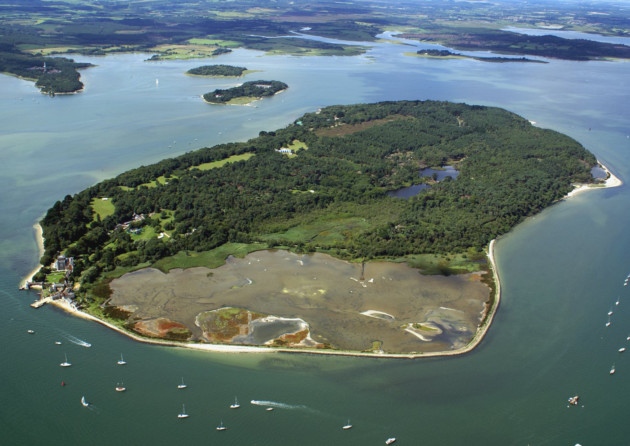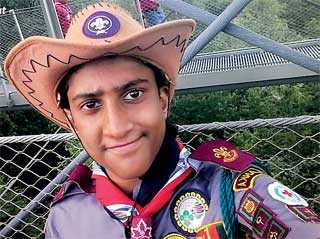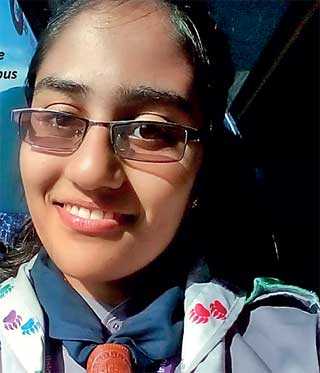Girl Scouting and the Creation of the Girl Guides (1908–1916)
Though the movement wasdesigned exclusively for boys who set up Scout troops across Britain, Baden-Powell’sscheme also appealed to young girls who began to adopt the title ‘scout’. The ‘model’ Scouting citizen was also distinctly male. Many of the roots of themovement are founded in a ‘hard-bodied masculine ideal’ and Baden-Powell sought tocreate a space for men and boys of different backgrounds to build a male community tiedup with ideas of patriotism, patriarchy and empire.
Many individuals have claimed to be the first ‘girl scout’, or have been dubbed so in thepress. However, the reality is that there were hundreds of girls who began Scouting inBritain during 1908. In many cases, girls acquired or borrowed a copy ofScouting for Boysfrom male relatives and were enthralled by the promises of adventure and fun it contained.Girl scouts organised themselves into small troops of female family members and friendsor joined with boys to create mixed troops, as did Marguerite du Beaumont from Norfolk:
We simply dressed ourselves, turned our stockings down on our knees, collected all thebroomsticks we could find in the broom cupboard and went to Scout HQ and bought scouthats, which in those days you could do. They didn’t ask us who we were or anything about it. Itwas a mixed patrol, we had two little boys, I think four little girls...and we used to doScouting.
Acquiring scout hats, adjusting stockings and appropriating broomsticks were thebeginnings of self-styled scout uniforms for girls, which in other accounts included scout shirts hand-sewn by girls themselves. Miss Elsie Lee, described as ‘the first girl scout in Newcastle-Upon-Tyne’, is shown in Figure 1 photographed in her ‘hotchpotch’ uniform.
 |
| Miss Elsie Lee, the first girl scout in Newcastle upon Tyne (1908) |
Elsie is photographed wearing a patterned blouse rather than an official khaki scoutshirt and a fashioned scarf or necktie in place of an authorised Group neckerchief. She is,however, modelling an official scout hat adorned with the insignia of afleur-de-lisandmaking the scout sign with the right hand as outlined inScouting for Boys.Thiscombination of official parts of the ‘culture’ of Scouting, crossed with homemade uniformalternatives to appear in the likeness of a scout, demonstrates the difficulties of how afounding organisation could control the users and interpretations of its ideas once thesewere placed in the public sphere.
Girl scouts such as Elsie went largely unnoticed during the organisation’s formativemonths, particularly as Scouting was a largely grassroots development with groups ofyoung people forming troops in towns and villages without central co-ordination. In othercases, local Scoutmasters representing the national Scout authorities ‘on the ground’accepted direct requests from girls, such as Sybil Cannadine from London, to be scouts.Sybil and her friends approached the Scoutmaster at St. Mark’s Camberwell, who ‘saw noreason why not, but couldn’t give us any help, except the book’.
Girl scouts, wherever they were meeting, and whoever they were meeting with, were inessence performing the same practices and activities as the boy scouts. To imagine fromthese accounts the adventures these girl scouts had on Saturdays, and to hear theexcitement and child-like passion in Sybil’s now elderly voice, is to gain a sense of howinspiring the original messages of Scouting would have been. In participating in the sameadventurous activities designed for male youth, I would argue that these original girlscouts were also engaging with powerful ideas about the nation and empire – ideas notintended for them. These girls had begun, at an informal independent level, to negotiatethe meanings about who could be a scout and the overarching constructions of both a(masculine) Scouting self and wider collective body of boy scouts. However, they couldonly do this to a certain extent as they were not allowed to participate in authorisedScouting spaces.
The official message from Headquarters on the issue of girl scouts was somewhatmisleading. A report from a Scout Competition in Wimbledon in May 1908 stated that ‘wewere very glad to see...several girl scouts wearing their badges’. Baden-Powell himselfprofessed that girls could be worthy and useful scouts and that ‘I am always glad to hear ofgirls’ patrols being formed’; he even went as far to say that ‘there is no reason at all whygirls should not study scoutcraft’. Conversely, parents and politicians found plenty ofreasons why girls should not study scoutcraft, based largely on Edwardian views aboutgender and the troubling rise of tomboys (Dyhouse 1981). The presence of girl scoutsthreatened the respectability and undermined the moral (single-sex) purpose of this neworganisation inspired by a number of gender and race-related anxieties (MacDonald 1993).The public criticism Baden-Powell received for seemingly allowing girl scouts meant thisissue needed to be resolved quickly. As the months went by, Headquarters started toregulate the spaces of Scouting with registration procedures, and yet girl scouts somehowcircumvented these new elements of control. When denied official access, many applied tobecome members anyway and access materials through the post using only their initials, orthrough their brothers’ names. This allowed girl scouts to go relatively unnoticed bydisguising their real identity and evading the attention of authorities.
This official Boy Scout enrolment card had either been ordered by, or come into thepossession of, nine-year-old Phyllis Hasker, who then crossed out the printed word ‘Boy’that precedes ‘Scout’ and replaced it with ‘Girl’ on two occasions. Furthermore, instead ofthis card being completed by a Scoutmaster, Phyllis has consciously decided to record herown progress as an independent scout, though it is noted that no further achievements arerecorded. This not only highlights how individual girls bypassed the machinery ofScouting as an organisation, but also the ways in which young people practised Scoutingaway from the authoritative gaze of adults associated with youth work and educationalspaces. The card, emblazoned with official scout insignia and illustrations of knots andscout hats, is a personal artefact that tells of the individual appeal to Scouting and thecreativity of naming one’s patrol (in this case, ‘Stork’). The seemingly banal act of crossing out a word and making this into a girl scout card can be seen as an act ofappropriation as well as demonstrative of the sense of belonging that the movementinspired – to boysandgirls. It also highlights that whilst there was a different and self-styled form of Scouting for girls, individuals such as Phyllis still utilised the officialmaterials produced by the organisation. These types of objects, despite being appropriatedby girl scouts, ultimately supported and reiterated Scouting ideals and (gendered)geopolitical identities.
 |
Enrolment card (1909)
‘Scout’ and replaced it with ‘Girl’ | |
Girl scouts would soon open up new spaces of engagement and negotiation in thepublic sphere through their desire to access the same spaces as boys and fully participate inthe activities and ethos of being a Scouting citizen. By 1909, over 6000 girls had registeredwith headquarters as scouts and in September of that year, the first ever Boy Scout Rallywas held at Crystal Palace in London (Scout Association 2006, 48). The rally was attendedby over 10,000 boys as well as an unexpected small number of girl scouts who‘gatecrashed’ dressed in their homemade and borrowed uniforms. Figure 3 shows girlscouts at the review standing amongst boy scouts, to whom the King sent a message urgingthem ‘to do their duty as men should any danger threaten the empire’.
Accounts vary about the response the girls received. Whilst Sybil describes that ‘wewere laughed at, we were whistled at, there were cat-calls, butwedidn’t mind – we werethere and we werepartof the show’, Marguerite recalls that ‘nobody took the slightest bitof notice of us’. On arrival, for many girl scouts, it was a shock to see boys:
It was a Scout rally and, of course, having called ourselves scouts, we thought all scouts weregirls and boys – mixed. But then we discovered they weren’t – they were all boys...Andthen B.P. himself came up to us and said ‘what are you doing here? Who are you?’ We said‘Please Sir, we’re the girl scouts’ and he said ‘I’ve never heard of you. Anyway, you bettercome and join in’ which of course pleased us very much.
in official Guiding and Scouting mythology, this Rally isoften cited as the ‘first time’ Baden-Powell realised he needed to create a separateorganisation for girls and yet my previous discussion highlights that Baden-Powellhadheard and written about girl scouts prior to the Rally.









